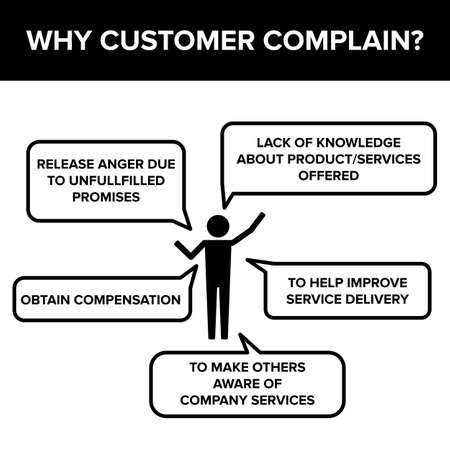Introduction to UK Pet Insurance Landscape
The UK boasts one of the most vibrant pet insurance markets in the world, reflecting a nation that truly values its companion animals. According to recent surveys, nearly half of UK households own at least one pet, and a significant proportion choose to insure them against unexpected veterinary expenses. With rising costs of vet care and increasing awareness of animal welfare, pet insurance has become an essential part of responsible pet ownership for many across the country. However, while policies often cover accidents and new illnesses, pre-existing conditions remain a sticking point for owners seeking comprehensive protection. This issue is especially pressing as pets live longer, making long-term health management a central concern. In this article, we will explore how different UK pet insurance providers approach pre-existing conditions—a topic that can greatly influence both peace of mind and financial planning for British pet owners.
2. Defining Pre-existing Conditions
When comparing UK pet insurance providers, it is essential to understand what is meant by the term ‘pre-existing conditions’. In general, a pre-existing condition refers to any illness, injury, or health issue that your pet has shown signs of, been diagnosed with, or received treatment for before the start date of a new insurance policy. However, the specifics of this definition can vary considerably between insurers in the UK.
How UK Insurers Define Pre-existing Conditions
Most British providers consider both diagnosed and undiagnosed conditions as pre-existing if symptoms were present prior to cover. Some are stricter, including any historical veterinary notes that might indicate a recurring problem. Others may focus on whether the pet was treated or advised treatment within a certain period (often 12–24 months) before taking out the policy.
Typical Criteria Used by UK Insurers
| Insurer | Definition Basis | Look-back Period | Example Condition |
|---|---|---|---|
| Axa | Any symptom, diagnosis, or treatment | 24 months | If your dog limped once 18 months ago, this may be considered pre-existing |
| Purely Pets | Treatment or advice from vet required | 12 months | If your cat had an eye infection last year, future related issues may be excluded |
| ManyPets (previously Bought By Many) | Signs/symptoms or diagnosis noted in vet records | Varies by policy | If your rabbit had digestive problems recorded two years ago, it could still count as pre-existing depending on the plan selected |
Key Takeaways for UK Pet Owners
The interpretation of ‘pre-existing condition’ is not uniform across UK pet insurers. When reviewing policies, always check how each provider defines these terms and pay close attention to look-back periods and what counts as evidence of a condition. This diligence ensures there are no surprises when making a claim and helps you select the most suitable cover for your pet’s medical history.

3. Major Providers and Policies
In the UK, pet insurance is a well-established market with several major providers offering a range of products tailored to different needs and budgets. Leading names include Petplan, ManyPets, Animal Friends, Direct Line, and Bought By Many (now operating as ManyPets). Each of these insurers typically offers four main types of policy structures: accident-only, time-limited, maximum benefit, and lifetime cover. Accident-only policies are generally the most affordable but offer the least comprehensive protection, covering only injuries resulting from accidents and excluding illnesses or ongoing conditions. Time-limited policies provide cover for both accidents and illnesses but only for a set period (often 12 months) from the onset of each condition. Maximum benefit policies allocate a fixed sum for each condition without any time restriction, but once the limit is reached, no further claims can be made for that issue. Lifetime cover is considered the most comprehensive option, with an annual limit that resets each year as long as the policy is renewed—this type is especially valued by owners of pets with chronic or recurring health issues. Major providers often differentiate themselves not only by price and coverage limits but also by how they handle pre-existing conditions, waiting periods, and customer service quality. It is common for insurers to offer additional features such as dental cover, complementary treatments, or overseas travel protection as optional add-ons. When comparing these providers, it’s important to scrutinise policy documents carefully to understand inclusions, exclusions, and the precise approach each insurer takes towards pre-existing medical conditions.
4. How Providers Handle Pre-existing Conditions
When comparing UK pet insurance providers, one of the most critical aspects for pet owners is how each insurer treats pre-existing conditions. These are medical issues your pet has shown signs of, received treatment for, or been diagnosed with before the start of a new insurance policy. The approaches among insurers in the UK can vary significantly, impacting both cover options and potential claim outcomes.
Common Approaches to Pre-existing Conditions
Pet insurance providers in the UK generally fall into one of several categories when it comes to pre-existing conditions:
- Outright Exclusion: Most commonly, insurers will exclude all pre-existing conditions from coverage. This means that any illness or injury your pet had before the policy started will not be covered under any circumstances.
- Cover After a Symptom-Free Period: Some insurers may consider covering a previously existing condition if your pet has been symptom-free and treatment-free for a specified period (often 12–24 months). After this timeframe, the condition may no longer be classified as pre-existing and could be included in cover moving forward.
- Partial Cover or Limited Payouts: A few providers offer policies that include partial cover or limited payouts for certain pre-existing conditions, often with higher premiums or specific limitations on claims related to those conditions.
- Case-by-Case Assessment: Some companies assess each application individually, potentially offering tailored solutions depending on your pet’s medical history and current health status.
Table: Comparison of Approaches Among Major UK Insurers
| Insurer | Pre-existing Condition Policy | Symptom-Free Period Required? | Special Notes |
|---|---|---|---|
| Petplan | Outright exclusion | N/A | No cover for any pre-existing conditions |
| ManyPets (formerly Bought By Many) | May cover after waiting period | Yes (typically 2 years) | Certain conditions may be covered after 24 months without symptoms/treatment |
| Agria Pet Insurance | Case-by-case assessment | No standard period | Certain pre-existing conditions may be considered upon application review |
| Direct Line | Outright exclusion with some flexibility on minor issues | N/A for major conditions; minor ones assessed individually | Minor, resolved issues sometimes reconsidered after a set period symptom-free |
| Purely Pets | Limited cover available for some pre-existing conditions | Varies by policy type and condition severity | Higher premiums may apply; exclusions still likely for major illnesses/injuries |
The Importance of Reading Policy Documents Carefully
No two insurers take exactly the same approach. For this reason, it is essential to scrutinise policy documents and speak directly with providers if your pet has any medical history. Pay close attention to what constitutes a “pre-existing condition”, how long a symptom-free period must last, and whether there are any exceptions or special terms that might apply in your case.
5. Case Studies: Real-Life Scenarios
To better understand how UK pet insurance providers approach pre-existing conditions, let’s consider a few practical scenarios that highlight the real-life experiences of pet owners navigating this process.
Case Study 1: Chronic Skin Allergies in a Labrador
Jane from Manchester adopted a Labrador with a history of skin allergies. She compared several insurers and found that most major providers, including Petplan and ManyPets, excluded treatment for any symptoms or diagnoses that appeared before her policy started. However, one specialist provider offered cover for pre-existing conditions after a symptom-free period of 24 months. Jane kept meticulous vet records and ultimately secured partial coverage after demonstrating the condition had been inactive for the required time.
Case Study 2: Cat with Recurrent Urinary Issues
Tom’s rescue cat in Bristol developed urinary issues two months before he sought insurance. When applying, he disclosed the history as required. One insurer offered cover for unrelated health problems but placed an indefinite exclusion on urinary tract treatments. Another insurer offered to review exclusions annually, so Tom chose them in hopes that future medical evidence might allow more comprehensive cover later on.
Case Study 3: Border Collie with Healed Leg Injury
Sophie’s Border Collie broke a leg as a puppy but made a full recovery before she considered insurance. Some providers automatically listed the old injury as an exclusion due to its nature, while others were willing to lift the exclusion if the dog remained symptom-free for at least 12 consecutive months post-recovery. Sophie provided supporting vet notes, and her chosen insurer eventually removed the exclusion, allowing claims for new leg injuries in future.
Lessons Learned from Real Cases
These case studies show that UK insurers differ significantly in their handling of pre-existing conditions. Transparency during application, patience with waiting periods, and diligent record-keeping can all improve outcomes for pet owners seeking broader coverage.
6. Tips for UK Pet Owners
Navigating pet insurance when your furry friend has pre-existing conditions can be a minefield, especially in the UK where providers’ policies vary widely. Here are some practical tips to help you make informed decisions and avoid common pitfalls.
Understand the Insurer’s Definition of Pre-existing Conditions
Each insurer has its own definition of what constitutes a pre-existing condition. Typically, this refers to any illness or injury that showed symptoms before your policy start date. It’s crucial to read the small print—some providers even consider conditions that were fully resolved as “pre-existing.”
Gather Your Pet’s Medical Records
Before applying for insurance, request a full veterinary history from your vet. Insurers will often ask for this to assess risk and determine eligibility. Having records at hand helps you answer questions honestly and expedites the application process.
Be Honest During Application
Disclose all known medical issues, no matter how minor they seem. Failure to do so could invalidate your policy later on. Full transparency ensures you won’t face unpleasant surprises if you need to make a claim.
Consider Specialist Providers
Some UK insurers specialise in covering pets with pre-existing conditions, albeit at higher premiums or with specific exclusions. Research these options if mainstream providers turn you down or offer limited cover.
Check Waiting Periods and Exclusions
Even if an insurer agrees to cover your pet, there may be waiting periods before claims related to pre-existing conditions are accepted. Familiarise yourself with these timelines and any permanent exclusions applied by the provider.
Review Policy Annually
Your pet’s health status may change year to year, and so might your insurance needs. Make it a habit to review your policy annually and compare it against new products on the market—switching could save you money or provide better coverage as your circumstances evolve.
Ask Questions
If in doubt, don’t hesitate to call up customer service and ask direct questions about how pre-existing conditions are handled. A reputable provider should be transparent and willing to clarify their position in plain English.
Taking these steps can help ensure that your beloved companion is properly protected and that you’re not caught out by unexpected costs or exclusions related to their health history.
7. Conclusion and Key Takeaways
Choosing the right pet insurance provider in the UK, especially when it comes to pre-existing conditions, can be a complex process. This article has highlighted how leading insurers differ in their definitions, waiting periods, and levels of cover for pre-existing medical issues. It’s clear that there is no one-size-fits-all solution; each policy has its nuances and exclusions that require careful scrutiny.
When comparing policies, UK pet owners should pay close attention to how providers define a ‘pre-existing condition’ and whether any exceptions or review periods apply. Some insurers are more flexible, offering limited cover after a symptom-free period, while others exclude these conditions outright. Understanding these distinctions is vital to avoid unwelcome surprises at claim time.
Price is only part of the equation—comprehensive policy documents and customer support tailored to your specific breed or pet’s health history are equally important. We recommend reading policy wordings thoroughly and reaching out directly to insurers with any questions about past illnesses or treatments.
In summary, the UK pet insurance market offers a range of approaches to pre-existing conditions, so take the time to compare, ask questions, and select a provider whose terms align with your pet’s needs and your peace of mind. By staying informed and proactive, you can ensure your furry companion has the best possible protection throughout their life.


